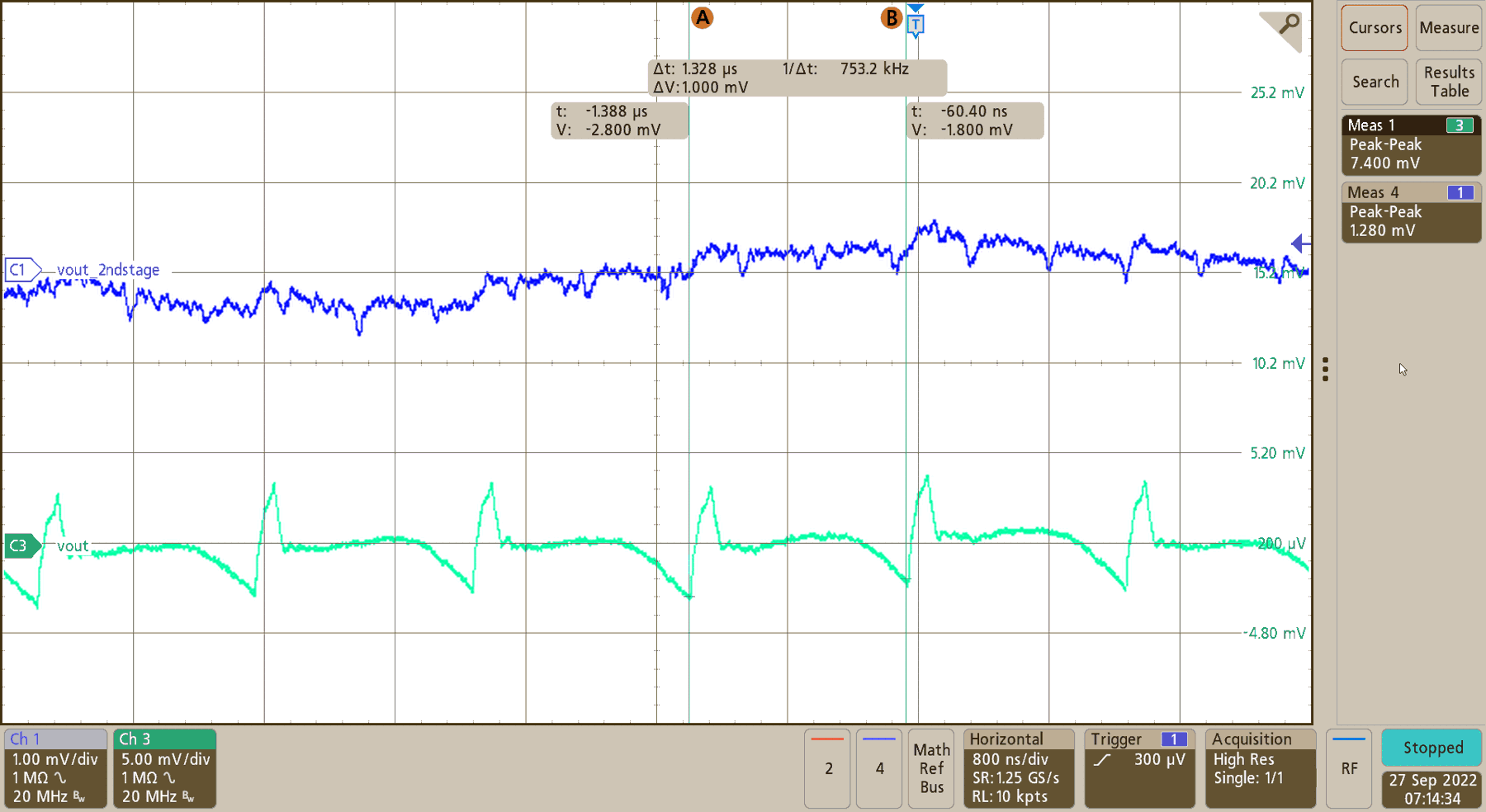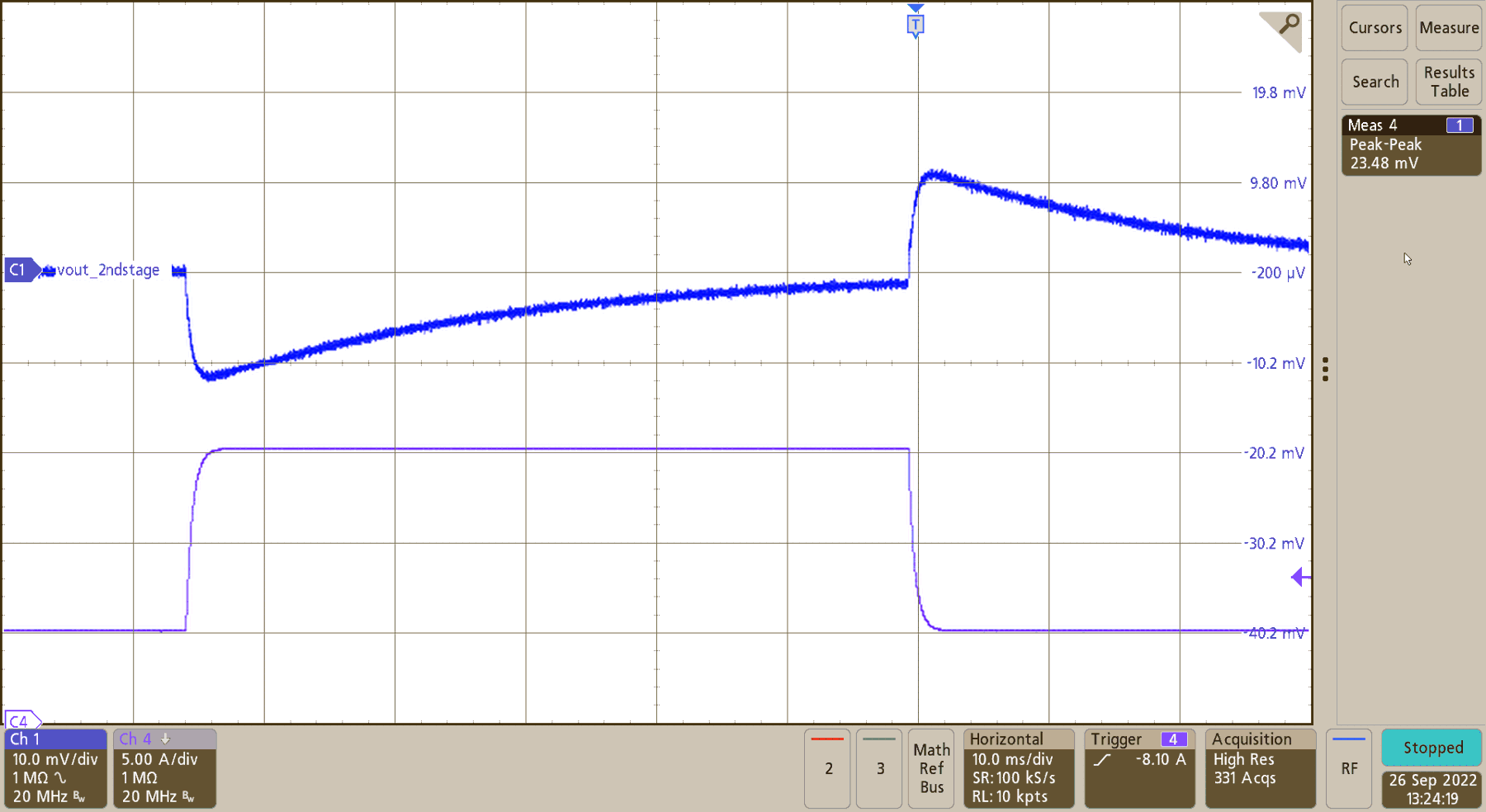SLYT837 January 2023 TPS543B22 , TPS548A28 , TPS56121
6 Advanced current mode (ACM) control architecture
Internally-compensated ACM is a ripple-based, peak-current-mode control scheme that uses an internally generated ramp to represent the inductor current. This control mode provides a balance between the faster transient response of non-linear control modes, like D-CAP3, and the broad capacitor stability of other externally-compensated, fixed-frequency control architectures, like voltage-mode control. ACM is a newer control architecture that allows the loop to be compensated with a single resistor instead of a resistor and capacitor network. The TPS543B22 has three selectable PWM ramp options to optimize the control loop performance when a second stage filter is implemented. Interestingly, we noticed that its evaluation module has capacitor and inductor solder pads on the circuit board to conveniently accommodate second-stage filter components. The TPS543B22 output voltage peak-to-peak ripple without an additional filter is 7.4-mV. With the additional filter applied, the output voltage ripple is 1.3-mV (as shown in Figure 6-1). The TPS543B22 design required no adjustments to the ramp to ensure stability. Figure 6-2 shows a load transient waveform with the same 10-A load-step as the previous converter, and the output voltage waveform after the implementation of the second-stage filter shows no sign of instability.
 Figure 6-1 TPS543B22 output voltage
ripple with and without additional second-stage filter.
Figure 6-1 TPS543B22 output voltage
ripple with and without additional second-stage filter. Figure 6-2 Transient response of
TPS543B22 using ACM control.
Figure 6-2 Transient response of
TPS543B22 using ACM control.